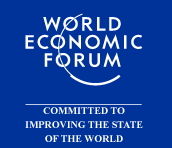 In an interconnected world, global issues demand integrative solutions. It’s a statement that many people would agree with – in systems where associations between cause and effect are complex, you ignore synergistic inter-relationships between factors at your peril.
In an interconnected world, global issues demand integrative solutions. It’s a statement that many people would agree with – in systems where associations between cause and effect are complex, you ignore synergistic inter-relationships between factors at your peril.
But when it comes to technology innovation, it seems that the rules don’t apply.
This week I am at the World Economic Forum Global Agenda Councils meeting in Dubai – I’m chairing the Council on Emerging Technologies. Our task is deceptively simple: How do we as a society ensure emerging technologies support responsive, sustainable and resilient solutions to global issues, without them leading to new problems? But as we are learning, finding answers is not easy. And the first hurdle we face is convincing people of the need to think holistically about emerging technologies.
It seems that all too often, for all the talk of integrative solutions to global issues, when it comes to technology innovation integration is the last thing on people’s minds.
I was forcibly reminded of the uphill struggle we face this afternoon, listening to BBC World News presenter Nik Gowing. Gowing was moderating a debate on natural resource scarcity, to be broadcast on the BBC World Service in a few days’ time. The debate addressed a specific question: As global population rises toward 9 billion people and the demand for natural resources such as water, food, oil and minerals increases, how do we meet the challenge of making diminishing resources go further? On the panel were Louise Arbour, President and Chief Executive Officer of the International Crisis Group (ICG); James Cameron, Vice-chairman of Climate Change Capital; He Yafel, Ambassador and Permanent Representative of the People’s Republic of China to the United Nations; Malini Mehra, Founder and Chief Executive Officer of the Center for Social Markets (CSM) and Kevin Rudd, Australian Minister of Foreign Affairs.
I was interested to see how systemic the panel’s thinking was on potential solutions, and in particular what their take was on the role of technology innovation. So I was just a little surprised when the “technology count” – the number of times that technology was raised as part of the solution to dwindling resources – came out as a resounding zero. This was a discussion on issues that are deeply influenced by technology innovation, which revolved exclusively around social, political and economic perspectives.
I was left wondering whether technology was not on the table simply because it is seen as too complex, or whether there was a naive assumption that, as crises arise, scientists and engineers will simply pull a metaphorical white rabbit out of their technology magic hat.
To be fair, the debate was specifically framed in terms of social, political and economic drivers. But I have to wonder: if integrative solutions are the key to complex and interdependent issues like resource depletion, how can we ensure that technology innovation is part of the conversation, rather than a somewhat optimistic bolt-on?
This concern is fueled by many similar experiences, and is one reason why raising awareness of the need to integrate an understanding of emerging technologies into dialogues on a multitude of global issues is high on the Council on Emerging Technologies’ agenda.
And no-where is this more important than in responses to global risks. As society faces new systemic risks, emerging technologies have three key roles to play. They can provide tools that enable emergent risks to be monitored, tracked and better-understood; they offer potential solutions to addressing emerging issues; and they can act as agents of change which may lead to a dramatically altered risk-landscape. But for the positive potential that is nascent in emerging technologies to be realized, integrative approaches to their development are essential. The danger of neglecting to do this is a potential failure of emerging technologies to lead to workable solutions to pressing issues. Or worse – the emergence of technologies that instead of reducing risks, lead to greater risks.
Of course, there are many discussions taking place on how emerging technologies might solve global problems. But they are usually separate from the social, economic and political factors that so often drive decision-making. And in a technologically complex and interconnected world, this is a recipe for disaster.
In moving forward, emerging technologies need to be brought in from the cold. They need to be moved up the global agenda. And they need to take their place alongside social, economic and policy factors in crafting integrative solutions to interconnected issues. Because the one thing we can be sure of is that if we don’t take an integrative approach to emerging technologies, when we most need a technology “white rabbit,” the hat will be empty!
I should add that even though I am the chair of the Emerging Technologies Council, these are my own views, and do not necessarily reflect those of the council.
Quick update 11/30/10: Tim Harper – fellow Council member – has just posted this helpful piece on the definition of emerging technologies: http://cientifica.eu/blog/2010/11/the-long-journey-from-nanotechnology-to-emerging-technologies/
